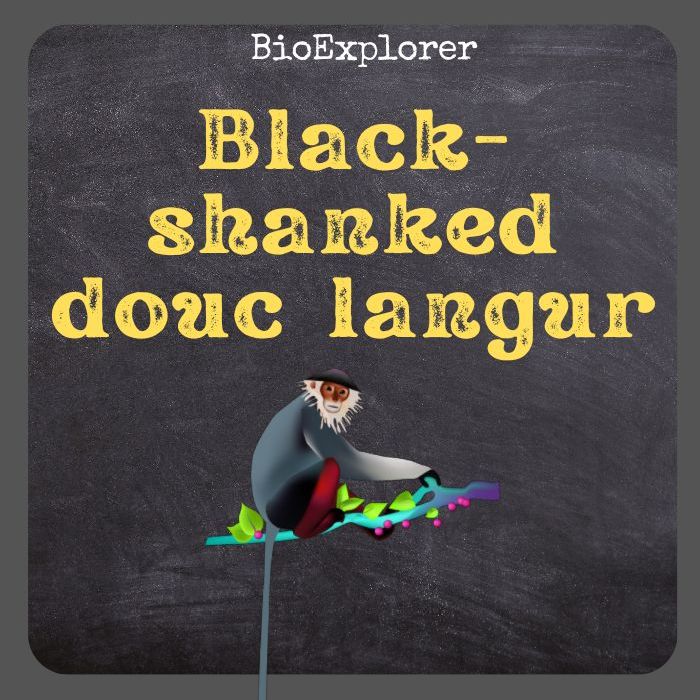
| Animalia | Primates | Cercopithecidae | Pygathrix | Pygathrix nigripes |

- Common Name: Black-shanked Douc
- Taxonomy Classification Year: 1871
- Monkey Size: 55 to 63 cm (21 to 25 in)
- Skin Color(s): Light gray
- Habitat: Rainforest
- Diet: Herbivorous
- Native Countries: Cambodia, Vietnam
Black-shanked Douc Distribution
Black-Shanked Douc Langur Characteristics
One of three species of Douc langur (the gray-footed and the red-footed are the other two), the black-shanked douc langur[1] is only found in southwestern Vietnam and eastern Cambodia, inhabiting primary monsoon forests as well as secondary and tropical forests.
- Like the gray-footed and red-footed douc langurs, nature has given the black-shanked douc langur a distinctive appearance and an almost odd beauty.
- Dark almond-shaped eyes and a heart-shaped hairless face characterize them.
- But rather than a golden face like that of the red- and gray-footed douc, nature used a different brush to paint the face of the black-shanked douc langur, painting it blue-gray and drawing yellow rings around the eyes.
- Long white whiskers frame their face and tickle their chin. Their feet and hands are black.
Black-Shanked Douc Langur Facts
- Active during the day, black-shanked douc langurs are diurnal. Black-shanked douc langurs spend most of their time in the forest canopy (which makes them arboreal).
- Like other douc langurs, these species leap from one branch to another, pushing off with their legs and landing feet-first on the next branch.
- They live in groups of multiple males and females, with females exceeding males. The group size is affected by human disturbances such as hunting and a habitat’s food sources.
- Black-shanked douc langurs are very social primates. They travel together, play together, and care for one another.
- When one foraging party encounters another during their travels, opposing males threaten each other by slapping their thighs with their hands.
Suggested Reading: Monkey Species
Cite This Page
APA7MLA8Chicago
BioExplorer.net. (2025, November 18). Black-shanked Douc Langur. Bio Explorer. https://www.bioexplorer.net/animals/mammals/monkeys/black-shanked-douc-langur/.
BioExplorer.net. "Black-shanked Douc Langur" Bio Explorer, 18 November 2025, https://www.bioexplorer.net/animals/mammals/monkeys/black-shanked-douc-langur/.
BioExplorer.net. "Black-shanked Douc Langur" Bio Explorer, November 18 2025. https://www.bioexplorer.net/animals/mammals/monkeys/black-shanked-douc-langur/.











